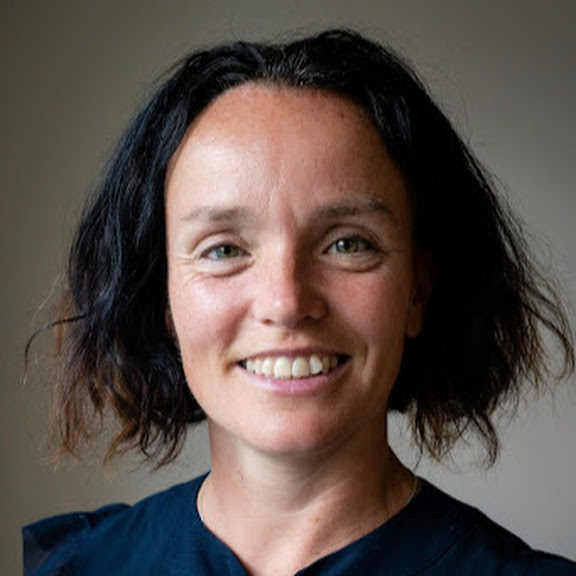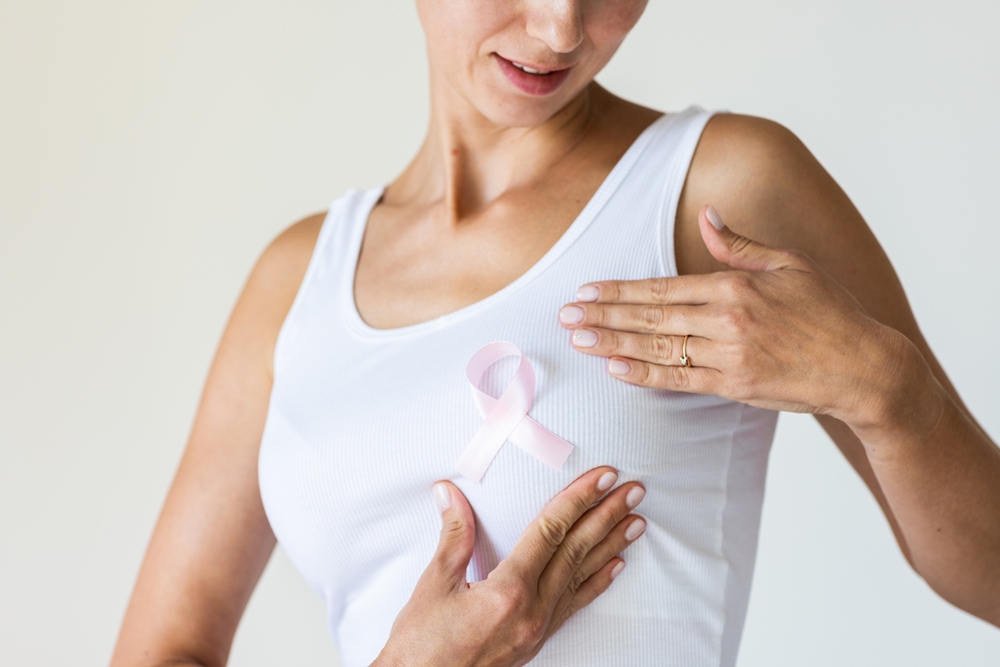Cancer
Analysing multiple mammograms improves breast cancer risk prediction

A new study describes an innovative method of analysing mammograms that significantly improves the accuracy of predicting the risk of breast cancer development over the following five years.
Using up to three years of previous mammograms, the new method identified individuals at high risk of developing breast cancer 2.3 times more accurately than the standard method, which is based on questionnaires assessing clinical risk factors alone, such as age, race and family history of breast cancer.
“We are seeking ways to improve early detection, since that increases the chances of successful treatment,” said senior author Graham Colditz, associate director of Siteman Cancer Center.
“This improved prediction of risk also may help research surrounding prevention, so that we can find better ways for women who fall into the high-risk category to lower their five-year risk of developing breast cancer.”
This risk-prediction method builds on past research led by Colditz and lead author Shu Jiang, a statistician, data scientist and associate professor of surgery in the Division of Public Health Sciences at WashU Medicine.
The researchers showed that prior mammograms hold a wealth of information on early signs of breast cancer development that can’t be perceived even by a well-trained human eye. This information includes subtle changes over time in breast density, which is a measure of the relative amounts of fibrous versus fatty tissue in the breasts.
For the new study, the team built an algorithm based on artificial intelligence that can discern subtle differences in mammograms and help identify those women at highest risk of developing a new breast tumour over a specific timeframe.
In addition to breast density, their machine-learning tool considers changes in other patterns in the images, including in texture, calcification and asymmetry within the breasts.
“Our new method is able to detect subtle changes over time in repeated mammogram images that are not visible to the eye,” said Jiang, yet these changes hold rich information that can help identify high-risk individuals.
At the moment, risk-reduction options are limited and can include drugs such as tamoxifen that lower risk but may have unwanted side effects. Most of the time, women at high risk are offered more frequent screening or the option of adding another imaging method, such as an MRI, to try to identify cancer as early as possible.
“Today, we don’t have a way to know who is likely to develop breast cancer in the future based on their mammogram images,” said co-author Debbie Bennett, associate professor of radiology and chief of breast imaging for the Mallinckrodt Institute of Radiology at WashU Medicine.
“What’s so exciting about this research is that it indicates that it is possible to glean this information from current and prior mammograms using this algorithm. The prediction is never going to be perfect, but this study suggests the new algorithm is much better than our current methods.”
AI improves prediction of breast cancer development
The researchers trained their machine-learning algorithm on the mammograms of more than 10,000 women who received breast cancer screenings through Siteman Cancer Center from 2008 – 2012. These individuals were followed through 2020, and in that time 478 were diagnosed with breast cancer.
The researchers then applied their method to predict breast cancer risk in a separate set of patients — more than 18,000 women who received mammograms through Emory University in the Atlanta area from 2013 – 2020. Subsequently, 332 women were diagnosed with breast cancer during the follow-up period, which ended in 2020.
According to the new prediction model, women in the high-risk group were 21 times more likely to be diagnosed with breast cancer over the following five years than were those in the lowest-risk group.
In the high-risk group, 53 out of every 1,000 women screened developed breast cancer over the next five years. In contrast, in the low-risk group, 2.6 women per 1,000 screened developed breast cancer over the following five years.
Under the old questionnaire-based methods, only 23 women per 1,000 screened were correctly classified in the high-risk group, providing evidence that the old method, in this case, missed 30 breast cancer cases that the new method found.
The mammograms were conducted at academic medical centres and community clinics, demonstrating that the accuracy of the method holds up in diverse settings.
Importantly, the algorithm was built with robust representation of Black women, who are usually underrepresented in development of breast cancer risk models. The accuracy for predicting risk held up across racial groups. Of the women screened through Siteman, most were white, and 27 per cent were Black. Of those screened through Emory, 42 per cent were Black.
In ongoing work, the researchers are testing the algorithm in women of diverse racial and ethnic backgrounds, including those of Asian, southeast Asian and Native American descent, to help ensure that the method is equally accurate for everyone.
The researchers are working with WashU’s Office of Technology Management toward patents and licensing on the new method with the goal of making it broadly available anywhere screening mammograms are provided. Colditz and Jiang also are working toward founding a start-up company around this technology.
News
The rise of preventive gynaecology: What women need to know

Co-written By Dr Claire Gillvray and Tarang Majmudar, Welbeck Cambridge (2026)
Gynaecological cancers, cervical, ovarian, uterine, vaginal, and vulvar, pose a significant health risk across all age groups.
While treatment has advanced in recent years, early detection remains the single most crucial factor in improving survival, reducing the need for invasive treatments, and preserving quality of life.
Why Early Detection Matters
When gynaecological cancers are detected early, the five-year survival rate exceeds 90 per cent.
In contrast, late-stage diagnosis can reduce survival chances by more than half. Early detection truly can mean the difference between life and death.
In England, the introduction of cervical screening in 1998 and HPV vaccination in 2008 has drastically reduced the incidence and mortality associated with cervical cancer.
For endometrial cancer, postmenopausal bleeding is a red flag symptom, prompting timely medical intervention and generally resulting in early diagnosis.
Yet, ovarian and vulval cancers often go unnoticed.
Ovarian cancer’s vague symptoms such as bloating, abdominal discomfort, and appetite changes, are frequently mistaken for benign conditions.
Vulval cancer symptoms like itching or soreness are often overlooked, especially post-menopause.
To improve early detection, a threefold strategy is essential:
- Screening
- Symptom recognition
- Lifestyle modification
1. Screening
Cervical cancer is one of the few gynaecological cancers that is both preventable and detectable through routine screening.
Caused primarily by the human papillomavirus (HPV), cervical cancer rates have dropped significantly due to HPV vaccination and cervical screening programmes.
In 2023, NHS England outlined its goal to eliminate cervical cancer by 2040.
Despite high HPV vaccination coverage (approximately 80 per cent), screening uptake has declined, particularly among younger women, where participation has dropped to 70 per cent.
The upcoming introduction of self-sampling for HPV aims to address this gap and improve participation.
However, no effective population-wide screening methods currently exist for ovarian, uterine, vaginal, or vulvar cancers.
This reality reinforces the importance of self-awareness, recognising symptoms, and attending regular gynaecological check-ups.

Dr Claire Gillvray
2. Recognising Warning Symptoms
Awareness of key symptoms is vital for early diagnosis:
- Cervical cancer: abnormal vaginal bleeding, post-coital bleeding, unusual discharge
- Ovarian cancer: persistent bloating, pelvic discomfort, urinary urgency, loss of appetite, weight loss
- Uterine cancer: postmenopausal bleeding, irregular or heavy periods
- Vaginal cancer: unusual bleeding or discharge
- Vulvar cancer: itching, pain, lumps, or ulceration
Although many of these symptoms can have benign causes, persistence or change from the norm should always prompt medical review.
Historically, women’s gynaecological symptoms have often been minimised or dismissed.
This has led to diagnostic delays for conditions like endometriosis, which still takes nearly 9 years on average to diagnose.
Young women are particularly vulnerable, with symptoms too often attributed to hormonal changes or stress.
Rather than placing blame, we must push for better education, research funding, and structural support to help clinicians, especially in primary care, identify early warning signs across diverse age groups and health backgrounds.
3. Lifestyle and Risk Reduction
Healthy habits can reduce the risk of several gynaecological conditions:
- Maintain a healthy weight
- Eat a balanced, nutrient-rich diet
- Avoid tobacco and limit alcohol
- Get vaccinated for HPV and practice safe sex
- Attend regular health checks
- Manage conditions like diabetes and hypertension
- Seek genetic counselling if there’s a family history of breast, bowel, or gynaecological cancers
Prevention isn’t only about medical care, it’s also about empowering people with the knowledge and tools to take charge of their health.
The Role of Men and Partners in Gynaecological Health
Preventative gynaecology isn’t a “women-only” issue. Men and partners play an essential role in recognising early warning signs, supporting open health conversations, and advocating for equitable care.
Awareness campaigns must include all genders, so that everyone can support informed decisions, challenge stigma, and help normalise seeking help early.
The Rise of FemTech
Preventative gynaecology is being transformed by FemTech with technologies including:
- Menstrual tracking apps
- Wearable hormone monitors
- At-home diagnostics
- AI-powered symptom tools
These innovations give people more insight into their own health and more confidence when seeking care.
Yet, technology alone isn’t enough. It must be paired with systemic changes in how symptoms are recognised and responded to.
Chronic pain, abnormal bleeding, and fatigue are too often normalised, leading to prolonged suffering and delayed diagnoses.
Empowering Through Self-Advocacy

Tarang Majmudar
A central tenet of preventative gynaecology is self-advocacy. This involves:
- Know your normal—cycles, mood, energy, libido
- Use tech to track symptoms and patterns
- Push for answers when something feels “off”
- Recognise that stress, sleep, and environment all play a role in health
Empowerment also means expecting and demanding respectful, informed care. It’s about being heard, not dismissed.
Prevention in Action: Real Progress
We’re already seeing the benefits of preventative measures:
- The HPV vaccine is reducing cervical cancer rates significantly.
- Early hormone therapy during perimenopause can protect bone, brain, and heart health.
- Growing awareness of reproductive conditions is shortening the diagnostic journey for many.
When supported by data and technology, people can have more meaningful conversations with healthcare providers and make informed choices about their bodies and care.
Looking Forward
For individuals:
Use digital tools to track trends and flag changes. Treat this data as a conversation starter, not a diagnosis.
For clinicians:
Engage with new technologies. Ask proactively about menstrual, hormonal, and sexual health.
For innovators:
Design inclusive, accessible tools for all bodies, all ages, all ethnicities.
For policymakers and researchers:
Support funding for research that focuses on earlier detection, better diagnostics, and equitable access to care.
The future of gynaecological care is not just about reacting to disease, it’s about preventing it, detecting it early, and empowering everyone to take control of their health.
Preventative gynaecology is more than a trend, it’s a necessity.
With education, accessible tools, cultural change, and collaborative action, we can make early detection the norm, not the exception.
Features
15k breast cancer patients a year could benefit from genome sequencing

Whole genome sequencing could identify unique genetic features to guide treatment for more than 15,000 breast cancer patients each year in the UK, new research suggests.
The technique, which analyses DNA from both patient and tumour to identify genetic changes, helps reveal what drives each cancer and highlights potential treatment targets or resistance.
Scientists at the University of Cambridge used data from almost 2,500 women across England held in the National Genomic Research Library – one of the world’s largest resources of its kind, run by Genomics England.
The data came from the 100,000 Genomes Project and was linked to clinical and mortality records, tracking outcomes over five years.
They found that 27 per cent of breast cancer cases had genetic features that could help guide personalised treatment immediately, either using existing drugs or through clinical trials – equivalent to more than 15,000 women a year in the UK.
Professor Serena Nik-Zainal is from the Department of Genomic Medicine and Early Cancer Institute at the University of Cambridge.
She said: “The UK is a genuine world-leader in its ability to do whole genome sequencing through the NHS Genomic Medicine Service.
“Now that we have population-level evidence of how impactful whole-genome sequencing could be, we have the potential to make a difference to thousands of patients’ lives every year, helping tailor their care more precisely, giving more treatment to those who need it and less to those who don’t.”
Among the key findings were HRD (homology-directed repair deficiency) – a DNA repair issue found in 12 per cent of breast cancers – unique mutations that could be targeted with specific drugs, signs of resistance to hormone therapy, and mutational patterns suggesting weaknesses that treatments could exploit.
An additional 15 per cent of cases had features useful for future research, such as problems in other DNA repair pathways, equating to about 8,300 women a year.
The analysis also offered insights into prognosis. In ER+HER2– breast cancers – the most common subtype, accounting for roughly 70 per cent of diagnoses – researchers found strong genetic indicators of tumour aggressiveness.
Major structural DNA changes, APOBEC mutational signatures (a form of DNA damage) and mutations in the cancer gene TP53 were all linked to higher death risk.
These genetic markers proved more predictive than traditional measures such as age, cancer stage or tumour grade.
Using these results, the researchers developed a framework to help clinicians identify which patients need more aggressive treatment and which could safely have less.
Around 7,500 women a year with low-grade tumours could benefit from more intensive therapy.
Professor Matt Brown, chief scientific officer of Genomics England, said: “This promising research further demonstrates the potential of genomics in improving cancer treatment outcomes for many people.
“Rapid advances in genomics are already ushering in the next generation of personalised cancer medicine. Not only can a patient’s genes guide precision treatment decisions that will best serve them, but we could improve how we match people up to clinical trials and help more patients access innovative treatments.
“Research like this highlights the value of the National Genomic Research Library and how understanding our genes can provide a real boost to the way we diagnose and treat disease.
“It’s all thanks to the contribution of participants and NHS partners in the 100,000 Genomes Project – the consented clinical and genomic data opens the door for incredible research opportunities.”
News
Drug improves survival in triple-negative breast cancer

A targeted therapy has improved survival compared with chemotherapy in patients with triple-negative breast cancer who cannot receive immunotherapy.
The drug, an antibody-drug conjugate (a treatment that delivers chemotherapy directly to cancer cells), slowed tumour progression and extended survival compared with standard chemotherapy in triple-negative breast cancer – an aggressive form lacking three common receptors found in other breast cancers.
AstraZeneca and Daiichi Sankyo’s Datroway succeeded in a Phase 3 trial involving patients whose tumours were either metastatic (spread to other parts of the body) or locally recurrent and inoperable. These patients were ineligible for a commonly used immunotherapy.
The companies said Datroway treatment led to a “statistically significant and clinically meaningful” improvement in both progression-free survival and overall survival, adding that the benefit in slowing tumour progression was “highly significant.”
They said it was the first time a survival benefit had been seen compared with chemotherapy in people unable to receive immunotherapy.
Ken Takeshita, Daiichi’s global head of research and development, said these “landmark” results have encouraged the companies to continue advancing Datroway programmes for triple-negative breast cancer and other tumour types.
They said full study details will be presented at an upcoming medical meeting and submitted to global regulators “as soon as possible.”
Datroway is one of several antibody-drug conjugates (ADCs) being developed by AstraZeneca and Daiichi Sankyo in the hope of replacing chemotherapy in many tumour types.
The drug targets a protein called TROP2, which is overexpressed in multiple cancers.
The companies have high expectations for Datroway following the clinical and commercial success of Enhertu, another ADC they co-developed that has helped transform treatment for certain breast cancers.
However, Datroway’s benefits have so far been less clear, leading to a narrower approval in lung cancer and lower commercial expectations in some advanced breast tumours.
In triple-negative tumours, Datroway could face competition from Gilead’s Trodelvy, another antibody-drug conjugate that targets TROP2.
Earlier this year, Gilead said Trodelvy kept tumours in check longer than chemotherapy in a trial also involving people ineligible for immunotherapy, although that study had not yet shown a survival benefit.
According to AstraZeneca, about 70 per cent of people with triple-negative breast cancer cannot receive immunotherapy, leaving chemotherapy as the first-line standard of care.
“We expect today’s results will mark an inflection point in the treatment of these patients who have the poorest prognosis of any type of breast cancer and urgently need better options,” said Susan Galbraith, who leads AstraZeneca’s cancer and blood disease R&D.
AstraZeneca shares rose by over 1 per cent in Monday morning trading, while Daiichi’s climbed by about 4 per cent.

 News4 days ago
News4 days agoScientists turn human skin cells into eggs in IVF breakthrough

 News5 days ago
News5 days agoFDA plans to revise black box warning on menopause hormone therapies

 Hormonal health5 days ago
Hormonal health5 days agoDaily pill could delay menopause ‘by years,’ study finds

 News4 days ago
News4 days agoMothers’, not fathers’, mental health directly linked to their children’s, study shows

 Opinion3 days ago
Opinion3 days agoManagers still unprepared to discuss menstrual health, study finds

 Wellness1 day ago
Wellness1 day agoAI-powered women’s health companion Nexus launches in UK

 News3 days ago
News3 days agoAncient herb to modern must-have: Why ashwagandha is capturing UK women’s attention

 News3 days ago
News3 days agoDrug improves survival in triple-negative breast cancer





























